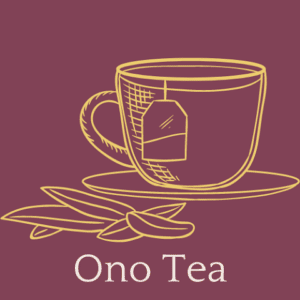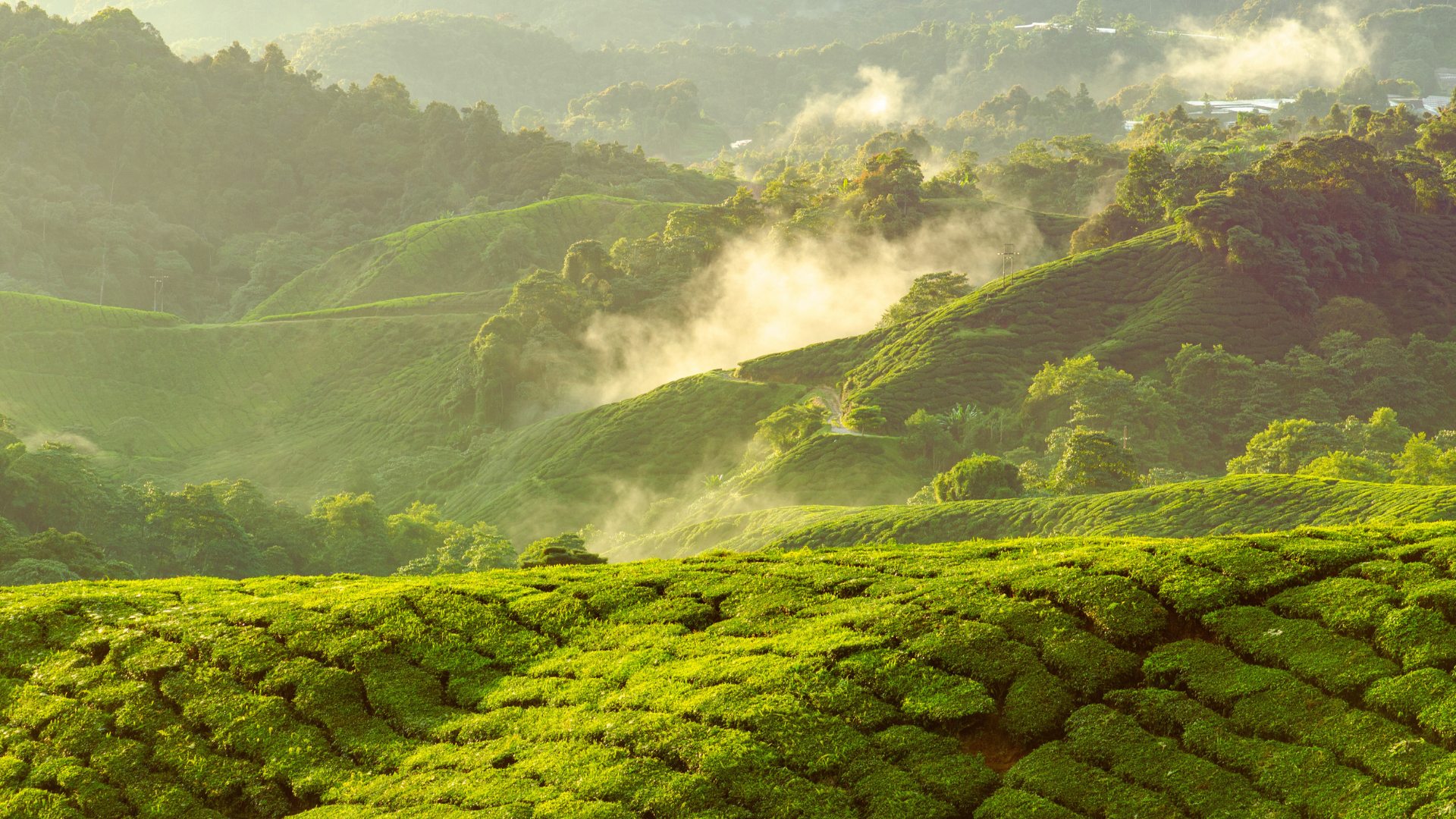Herbal teas have been cherished for millennia, crossing continents, cultures, and traditions to become some of the most beloved beverages in the world today. Unlike true teas derived from the Camellia sinensis plant—such as black, green, or oolong tea—herbal teas, often called tisanes, are infusions made from a variety of plants, including leaves, flowers, roots, seeds, and fruits. These brews have served purposes ranging from medicinal remedies to daily rituals, offering flavors and benefits as diverse as the regions they hail from.
In this exploration, we’ll journey through the history and origins of some of the most popular herbal teas—chamomile, peppermint, rooibos, hibiscus, and yerba mate—uncovering their roots and the cultural significance they hold.
Chamomile: The Ancient Calmer
Chamomile tea, with its delicate floral notes and soothing properties, is one of the oldest and most widely recognized herbal infusions. Its history stretches back to ancient Egypt, where it was revered as a sacred herb dedicated to the sun god Ra. The Egyptians used chamomile (Matricaria chamomilla or Chamaemelum nobile) for its purported ability to treat fevers, calm nerves, and even embalm the dead, as evidenced by traces found in mummies’ tombs. Hieroglyphic records and archaeological finds suggest that chamomile was a staple in their pharmacopeia, valued for its anti-inflammatory and sedative effects.
The Greeks and Romans further embraced chamomile, with the name itself derived from the Greek chamai (on the ground) and melon (apple), referring to its low-growing nature and apple-like scent. Hippocrates, the father of medicine, recommended it for digestive ailments, while Roman soldiers sipped chamomile infusions to ease anxiety before battle. By the Middle Ages, chamomile had spread across Europe, appearing in monastic gardens and apothecary recipes as a cure for insomnia, colds, and skin conditions.
Today, chamomile remains a global favorite, often associated with relaxation and bedtime rituals. Its enduring popularity owes much to its gentle flavor and scientifically supported benefits, such as reducing stress and aiding sleep. From ancient Egypt to modern teacups, chamomile’s journey reflects humanity’s timeless quest for calm amid chaos.
Peppermint: A Refreshing Legacy
Peppermint tea, known for its invigorating menthol aroma and cooling sensation, has origins that intertwine mythology and medicine. The plant (Mentha × piperita), a natural hybrid of watermint and spearmint, is believed to have emerged in Europe or the Mediterranean region thousands of years ago. Greek mythology tells of its creation: the nymph Minthe, transformed into a plant by the jealous goddess Persephone, became the fragrant herb we know today. Whether myth or metaphor, this story underscores peppermint’s deep cultural roots.
Historical records show that peppermint was cultivated in ancient Egypt as early as 1000 BCE, with dried leaves discovered in pyramids. The Greeks and Romans prized it for its digestive properties, often chewing the leaves or steeping them in water after feasts. Pliny the Elder, a Roman naturalist, documented its use for stomach complaints and as a breath freshener—a practice that echoes in modern chewing gum.
By the 18th century, peppermint had become a staple in European herbalism, with British colonists bringing it to North America, where it thrived in the fertile soils of the New World. Indigenous peoples, already familiar with native mints, adopted peppermint into their own healing traditions. Today, peppermint tea is celebrated worldwide for its ability to soothe upset stomachs, relieve headaches, and refresh the senses, cementing its status as a versatile and beloved tisane.
Rooibos: South Africa’s Red Treasure
Rooibos tea, with its rich, ruby-red hue and naturally sweet flavor, is a relative newcomer to the global tea scene, yet its origins are deeply tied to South Africa’s indigenous heritage. Derived from the Aspalathus linearis shrub, rooibos (pronounced ROY-boss) grows exclusively in the Cederberg region of the Western Cape. The Khoisan people, South Africa’s earliest inhabitants, were the first to harvest its needle-like leaves, fermenting them in the sun to create a nourishing drink long before European settlers arrived in the 17th century.
It wasn’t until the 18th century that rooibos caught the attention of Dutch colonists, who began using it as an alternative to expensive imported black tea. By the early 20th century, a Russian immigrant named Benjamin Ginsberg recognized its commercial potential, marketing it as “red bush tea” in 1904. His efforts laid the groundwork for rooibos to become a South African export, though it remained a local secret until after World War II, when global demand surged.
Unlike many herbal teas, rooibos is caffeine-free and rich in antioxidants, making it a modern health darling. Its rise reflects both the ingenuity of indigenous knowledge and the adaptability of a plant once overlooked by the wider world. Today, rooibos is enjoyed hot or iced, plain or blended, a testament to its versatility and South Africa’s unique contribution to the tea pantheon.
Hibiscus: A Vibrant Tradition
Hibiscus tea, known for its tart, cranberry-like flavor and striking crimson color, has a history as vibrant as its appearance. Made from the dried calyces of the Hibiscus sabdariffa flower, this tisane traces its origins to ancient Africa, particularly the regions of modern-day Egypt, Sudan, and West Africa. In ancient Egypt, hibiscus—called karkade—was a royal drink, served chilled to pharaohs and nobility as a refreshing tonic in the desert heat. Its high vitamin C content and cooling properties made it a practical choice in arid climates.
The tea spread along trade routes, reaching the Middle East, India, and Southeast Asia by the medieval period. In West Africa, it became a ceremonial beverage, often sweetened and spiced during celebrations. When enslaved Africans were forcibly brought to the Americas, they carried hibiscus traditions with them, adapting it into drinks like Jamaican sorrel or Mexican agua de jamaica. In the Caribbean and Latin America, hibiscus tea is now a cultural icon, often infused with ginger, cinnamon, or citrus.
Hibiscus’s global appeal grew in the 20th century as its health benefits—such as lowering blood pressure and boosting immunity—gained scientific backing. From African royalty to modern smoothie bars, hibiscus tea embodies a legacy of resilience, flavor, and cross-cultural exchange.
Yerba Mate: South America’s Social Brew
Yerba mate, a bold, earthy infusion from the Ilex paraguariensis plant, is more than a tea—it’s a way of life in South America, particularly in Argentina, Paraguay, Uruguay, and southern Brazil. Its origins lie with the Guarani people, indigenous to the Paraná River basin, who began cultivating and drinking mate centuries before European contact. The Guarani viewed it as a gift from the gods, using it in rituals and as a stimulant to sustain them through long hunts. They dried the leaves over fire, ground them, and steeped them in gourds, sipping through a bombilla (a metal straw), a tradition that persists today.
When Spanish Jesuits arrived in the 16th century, they observed the Guarani’s use of yerba mate and began cultivating it on missions, dubbing it “Jesuit tea.” By the 18th century, it had become a cornerstone of South American culture, shared among friends and family in a communal gourd as a symbol of unity. Unlike solitary tea-drinking traditions elsewhere, mate is inherently social, with the act of passing the gourd fostering connection.
Yerba mate’s caffeine content and nutrient profile—rich in antioxidants and vitamins—made it a practical choice for gauchos and laborers, earning it the nickname “the drink of the gods.” In the 20th century, it spread beyond South America, gaining a foothold in Europe and North America as a natural energy boost. Today, yerba mate bridges ancient indigenous wisdom with modern wellness trends, its smoky flavor a reminder of its storied past.
The Global Tapestry of Herbal Teas
The histories of chamomile, peppermint, rooibos, hibiscus, and yerba mate reveal a shared thread: humanity’s ingenuity in harnessing nature’s bounty. These teas began as local remedies or rituals, shaped by the landscapes and needs of their origin cultures. Over time, trade, colonization, and globalization wove them into a worldwide tapestry, each retaining its unique character while adapting to new palates and purposes.
Chamomile’s journey from Egyptian tombs to European bedtime routines speaks to its universal appeal as a calmer. Peppermint’s evolution from Mediterranean fields to American gardens highlights its practicality and zest. Rooibos’s rise from Khoisan fires to international shelves showcases South Africa’s hidden gems. Hibiscus’s path from pharaohs’ courts to Caribbean kitchens reflects its adaptability and vibrancy. And yerba mate’s enduring role in South American social life underscores the power of tradition in a fast-moving world.
These herbal teas are more than beverages—they are stories in liquid form, steeped in history and flavored by the hands that cultivated them. As we sip them today, whether for health, comfort, or curiosity, we partake in a legacy that spans millennia and continents, a reminder of our shared human heritage.

